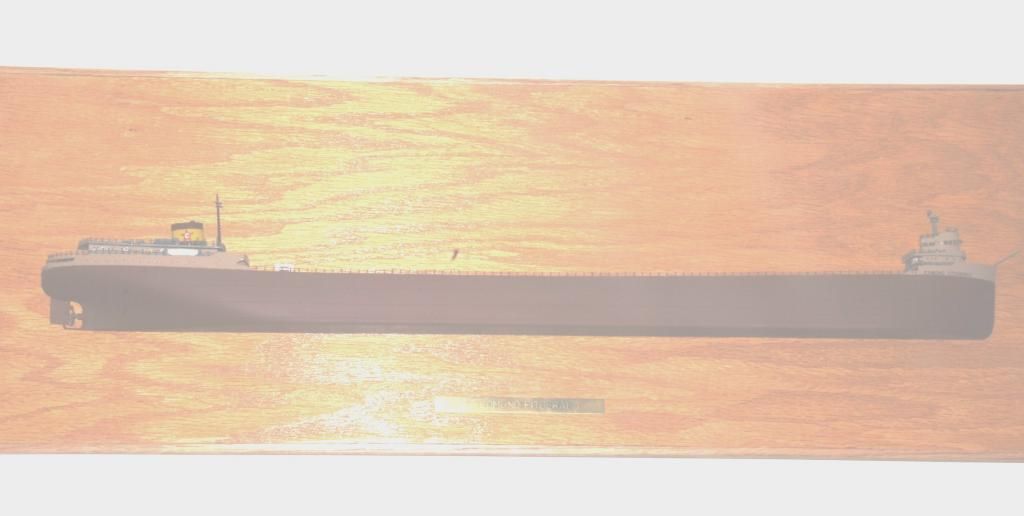You’ve built a beautiful Sailing or Steam ship . Military or civilian. Now you discover you are running out of shelves and room to build more. What do you do?
Here’s an idea that’s as old as the hills .You know when they built yachts and sailing ships - Sometimes ,rather than do a whole hull model to show the hull and sheer lines, they did half hull models of solid wood. It’s actually a real art form in it’s own right !
You can do this in plastic too.Even resin. That way if you want ,with careful background painting you can put the vessel in the proper environment. Or you can showcase a gorgeous old sailing - half model with a piece of exotic wood as a backdrop,in it’s natural grain !
There are very many ways to do this ,and this is a good time to do something else too.Try a half hull cut- away model. You have the whole back - piece to support your work ! Think about it .Half hull models don’t need a base to sit on and therefore they are out of harms way too !
I saw a model in a friends house .The OLYMPIA ! he’d done it that way .Wow,is all I can say ! That white and red hull up against a natural birds - eye maple plaque really made the old ship’s brass and wood work come alive . Try it ,you’ll like it ! T.B.
Paragraphs working well there Tankerbuilder!
The half model has a long, distinguished tradition. Fairly early in the nineteenth century, designers started using half models (carved from lifts) as the first step of the design process. Museums literally have thousands of half models from that period; in many cases (particularly merchant sailing ships) they’re the only surviving documentation of the ships.
Even well into the twentieth century naval architects found use for half models. The museum where I used to work had a builder’s half model of the S.S. United States. The designers had used it to plot out the shapes of the hull plates.
Half models, old or new, make fine decorations. Some people like to make the lifts of different wood species, to emphasize the curves of the ship’s lines. Bluejacket offers several half model kits: http://www.bluejacketinc.com/kits/halfhull.htm , http://www.bluejacketinc.com/kits/belford_gray.htm , http://www.bluejacketinc.com/kits/jacob_pike.htm . I wish they’d make more. (Generally speaking I find all ships interesting, but I have trouble working up much excitement for a half model of a sardine carrier.)
Quite a few folks build half models for pleasure, or for sale. A member of our model club has built dozens of them. I never get tired of admiring them.
A fully-detailed half model also has a great deal to recommend it. You have to make a big decision in the beginning: just where do you make the cut? If you run it right down the centerline, you’ll have to cut all the fittings on the centerline in half - including the masts. If you make the cut a little shy of the centerline, the keel, stem, and sternpost will have to project from the backboard.
Another interesting possibility is the cross-section model. The HECEPOB companies make several, and Bluejacket is talking about a forthcoming cross-section of the Charles W. Morgan. I once saw a cross-section of H.M.S. Victory mounted on the modeler’s wall. Looked great.
I have built two half-hull models of steamships (no reason to limit yourself to sailing sloops or schooners). First was the Edmund Fitzgerald I built to hang on my wall at work until I retired. It now hangs on wall in my den- looking at it at the moment. The other was of a great lakes whaleback, the John Ericsson, which I gave to my son to decorate their house. He returned the remains a few years later- it had been smashed up pretty bad by movers. I have all the parts, so hope to restore it one of these days. Fitz was in 1:196, Ericcson was in 1:96.
Personally, I find cross-section models an intriguing option, and half-hulls are something I hadn’t even heard of yet. Might be an interesting way to leverage extra pieces/parts accrued over a few years of work in this hobby.
Charles
I had misread TB’s original post, and it had an intriguing nugget of an idea in there–a half-hull that was also a cross-section model. Although, the dynamics of a case which bifurcates the subject could be a hurdle to overccome.
Here is a shot of my Fitz half hull. Sorry for the bad flash picture 

It looks like a real beauty, Don - and to my eye that’s an excellent style for a Great Lakes ore freighter.
The story of your John Ericsson is awful. I hope your son was able to get some money out of the movers’ insurance company.
